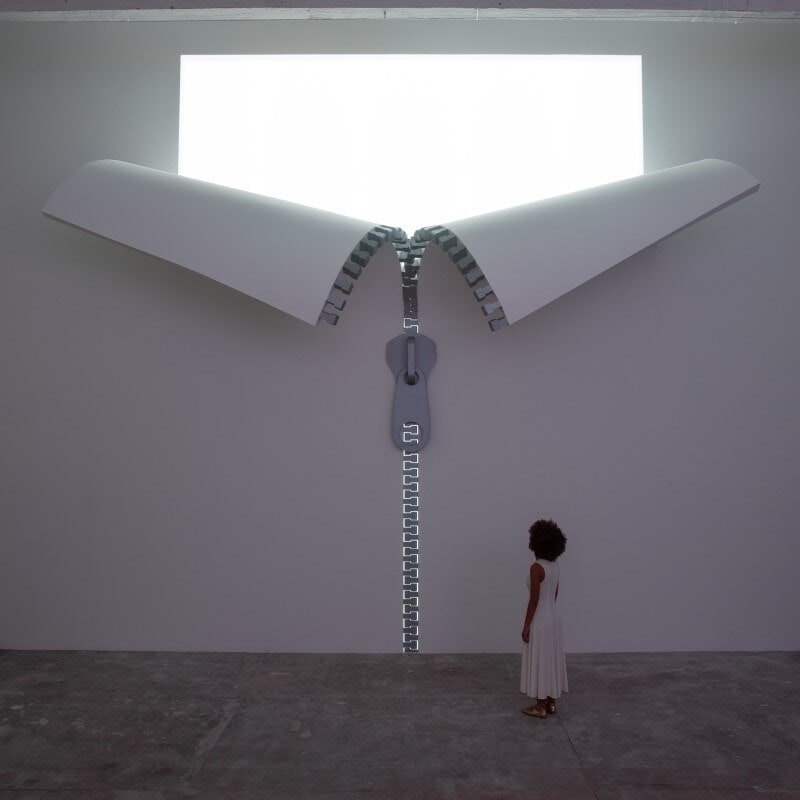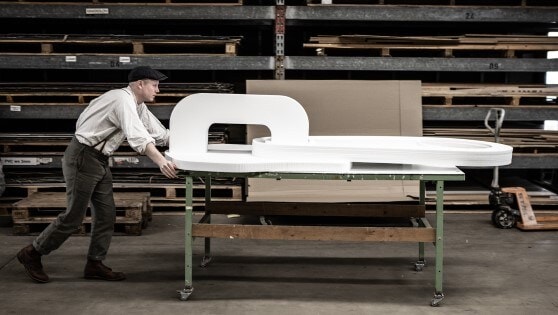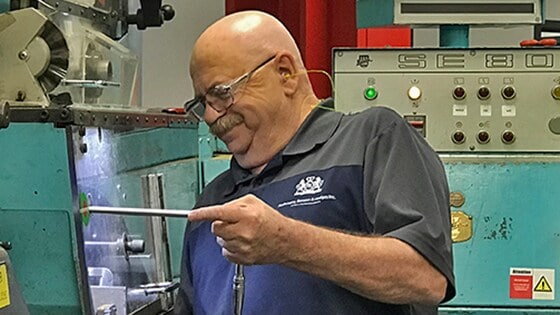The architectural patchwork of Milan’s Tortona district is interrupted by what looks like an old factory, with a peeling façade.
Passers-by are puzzled, and left scratching their heads.
But it’s the latest installation from Alex Chinneck, the acclaimed British sculptor, who unveiled his new work in the south-west quarter of Milan.
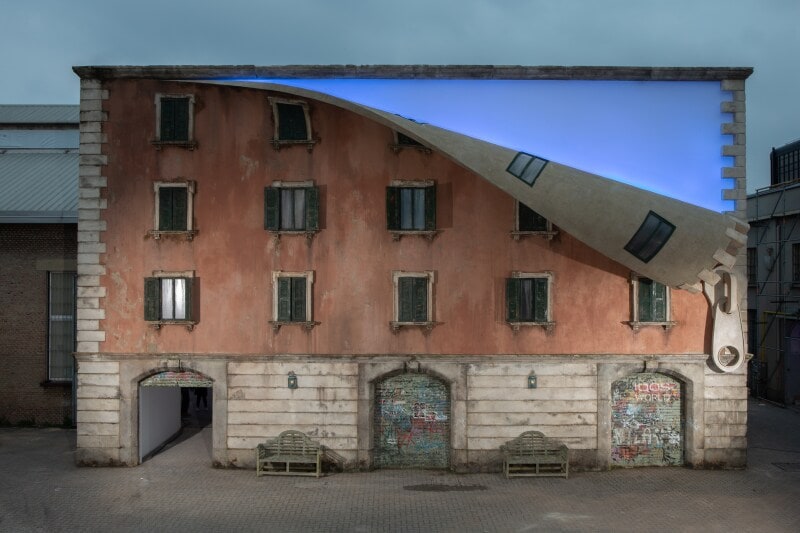
MASTER OF ARCHITECTURAL ILLUSION
His oeuvre was displayed at Opificio 31’s entrance, one of the iconic buildings that hosted workshops during the Milan Design Week.
A distinctive feature of the project is a zip, a visual escamotage that Chinneck uses as a metaphor of transformation, evoking possible routes to a newly imagined future.
As we celebrate the master of architectural illusion with an exclusive interview, Chinneck himself reveals his new ambitious projects in Mumbai and Germany, in a pledge of expanding into an international arena where constant transformation is essential.
This is your first project in Italy. How do you feel about displaying your installations at the Fuorisalone?
I’m excited to share what we have achieved with the global design community and with audiences in Milan. These are among the best artworks that we have ever created. The brief was to challenge thinking and create conversations. This has encouraged me to take my practice in a new and contemporary direction. I hope that people enjoy the results as much as I do.
How did this project come about?
I was invited to Milan to meet members of the global and local marketing teams to discuss the potential of collaborating on a project. As soon as we started talking and saw the site that had been secured for Milan Design Week, I think we were all struck by the scale of the opportunity.
The distinctive feature of this project is a zip, an escamotage for transformation. What’s your ideal process of transformation?
My ideal process would be an easy one, uncomplicated and unconstrained by practicalities. However, the reality of my creative practice is that it takes huge effort, investment, determination and teamwork to transform my ideas into reality. I’m sure that’s something that PMI can relate to, as part of its commitment to a smoke-free future.
How do you choose your projects? Where do you draw inspiration from?
I like to daydream, imagining different ways of making familiar materials and structures do extraordinary things. I’m drawn to projects where my imagination is given free rein and where there is the ambition and resource to bring my dreams to life.
You’ve created monumental sculptures, optical illusions, elaborate and intricate pieces. How do you approach change for such different styles?
I’m attracted to new challenges and driven by a constant desire to make new work. One opportunity that making public artwork offers is that each new partnership, location or even, in this case, country, deserves a unique response. We tune the visual and material language of the work to the place in which it stands and work with a multi-disciplinary team to realize it.
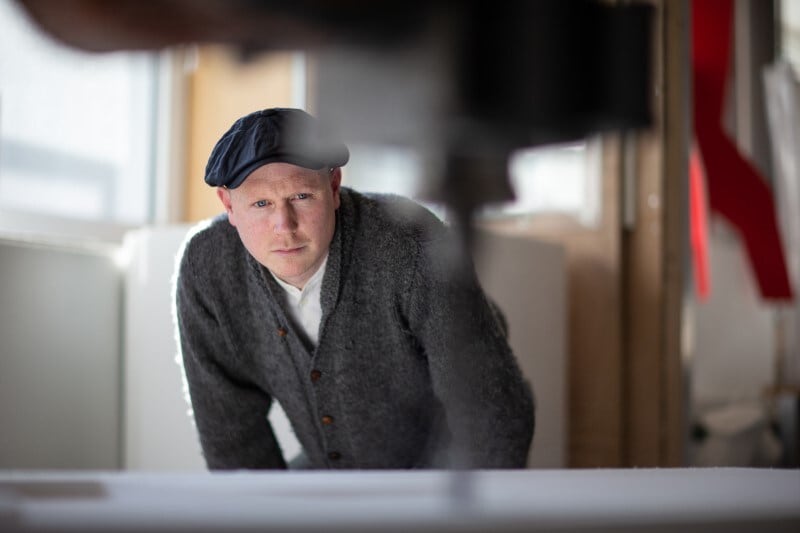
Do you feel you are more an engineer, an illusionist, or a sculptor?
My sculptures create challenges that are solved in collaboration with engineers and occasionally by the use of illusion l. But the reason that they exist in the first place is the inexplicable desire and drive to create them, which defines me as an artist. I’m often asked whether I’m an artist or designer, but I like to think that we design artworks, giving great consideration to the experiences they offer.
How does art work in an Instagram culture?
We live in an increasingly digital age that has opened up access to art, which is great for artists and for audiences - myself included. Still, artwork is best experienced in person and my own work is so much more impactful in real life. For Milan Design Week, we intentionally conceived and created an artwork that takes audiences on an interactive journey. It offered them the opportunity, for the first time, to be physically immersed in the work. I hope that Instagram introduces us to a wider audience and acts as an invitation as well as inspiration for people to see the installation for themselves.
Your large installations redesign public spaces. How important is cultural accessibility to you?
Like most artists, I make work to be seen and hopefully enjoyed by as many people as possible. By developing a specialism for making large scale, outdoor sculptures, I’m fortunate to be given an incredible platform and opportunity to reach a large number of people. With that comes a responsibility to create work that is accessible, making a positive contribution to public space and public life.
How do you choose the title of your installations?
It’s a combination of day-dreaming and poetry, providing a window into the conceptual considerations behind the work.
How many other projects are you working on right now? What can you tell us about your future projects?
My practice is broadening its ideas, materials, processes and, increasingly, locations. I’m particularly excited to be developing an international portfolio of projects. We are currently working on perhaps ten large artworks, including a major public artwork for Mumbai and an exciting project in Germany.
